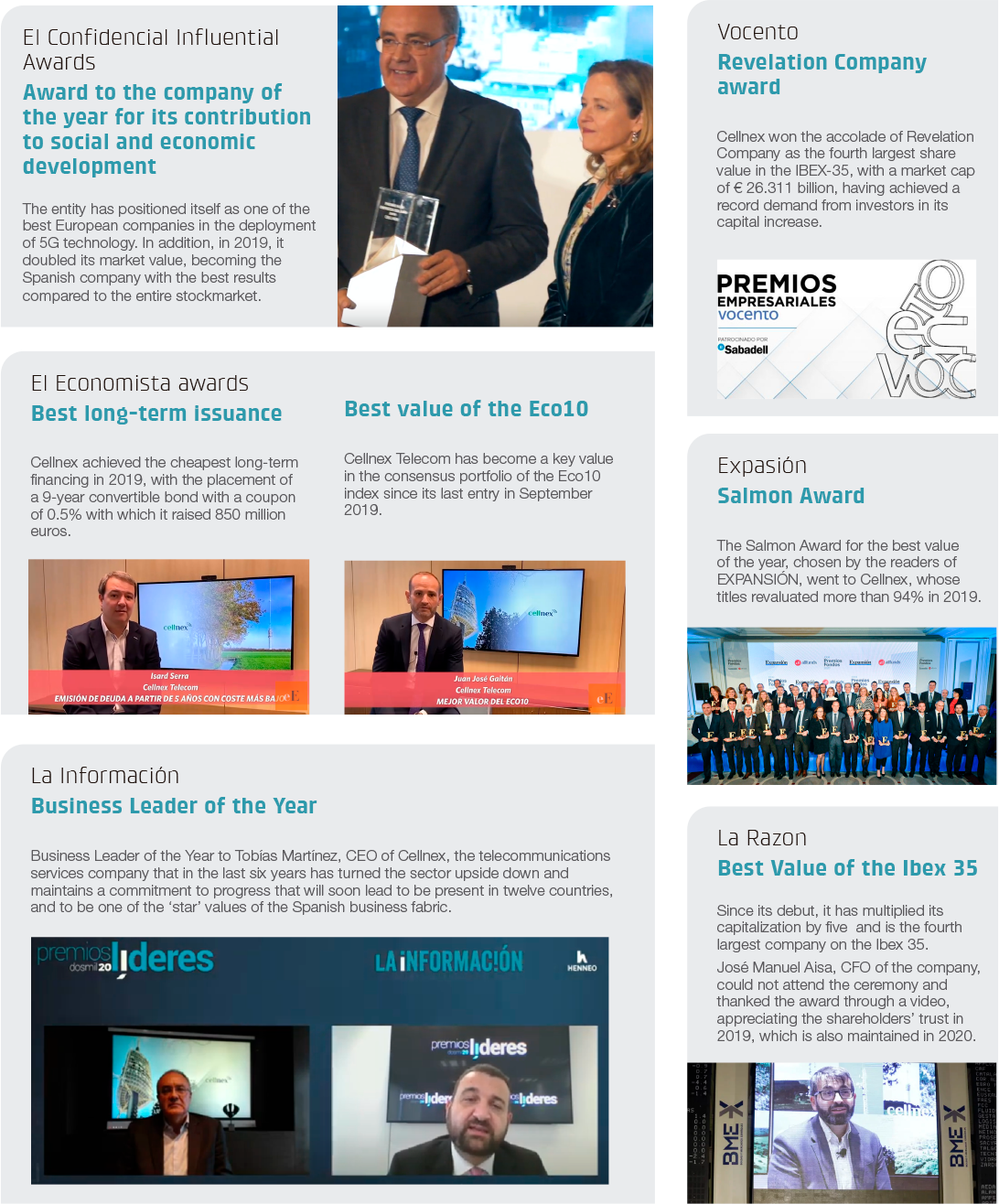Cellnex’s ESG strategy
A framework to address ESG issues in the Group
In addition to facing up to the immediate challenges, Cellnex is aware of the new risks and demands arising as a result of the environmental and social phenomena that dominate the international context.
The increasing regulation in Europe in the field of sustainability, the greater awareness of those aspects beyond the purely economic ones, as well as the great challenges faced by organisations such as Cellnex (greater transparency, shareholder involvement, climate change, risks in the value chain, circular economy, Sustainable Development Goals (SDGs), …) have led the company in recent years to bolster its commitment to Environmental, Social and Governance (ESG) issues. In this regard, the revamping of the company's ESG strategy should be highlighted by updating the ESG Master Plan of Cellnex group.
Because of the diversity of matters that can be considered under ESG issues, there is a certain lack of homogenisation of the ESG criteria to be considered. For instance, experts such as Bank of America Merrill Lynch point out that the key ESG signals for European Telcos are:
- Environmental: Carbon Emissions, Toxic Emissions & Waste
- Social: Labour Management
- Governance: Business Ethics, Anti-Competitive Practices, Corporate Governance
In this connection, Cellnex has carried out a materiality study in which the most important ESG issues of the company were identified and prioritised in each of their components (Environmental, Social and Governance) as explained in the following sections.
Cellnex’s commitment to ESG issues is a matter of priority. Thus, the remuneration of leadership positions, including the CEO, is associated with the company’s performance in ESG issues.
An ESG Master Plan (2021-2025)
In 2020, the company's ESG strategy set out in the company's 2016-2020 CSR Master Plan was updated by defining a new ESG Master Plan (2021-2025) at Group level, taking into account the evolution of the company in recent years and its growth and internationalisation process, updating the ESG diagnosis done in the past to show the current state of the company in ESG matters and the new trends and expectations of stakeholders.
Likewise, a new materiality analysis was performed for Cellnex at Group level, allowing the company to know which aspects are most relevant to it in the field of ESG.
The 2016-2020 CSR Master Plan was used as a starting point for this. During the last five years, 92% of the lines established in the six axes defined in the CSR Master Plan have been implemented and 89% of the actions have been carried out. Actions pending implementation have been included in the new ESG Master Plan.
CSR 2016-2020 Master Plan
|
Action Areas |
No. Action lines |
No. Lines under development |
No. of actions |
Attainment of the different actions |
|
Ethical management and good governance |
5 |
100% |
21 |
90% |
|
People development |
6 |
100% |
9 |
89% |
|
Sustainable development of the business |
9 |
100% |
17 |
82% |
|
Adding value to society |
5 |
80% |
9 |
89% |
|
Communication and reporting |
10 |
80% |
13 |
85% |
|
Governance of Corporate Responsibility |
3 |
100% |
13 |
100% |
|
Total |
38 |
92% |
82 |
89% |
Cellnex Telecom
Under the new ESG Master Plan, Cellnex will continue to make progress in integrating ESG into the corporate culture and activities of the company, taking into account the different countries in which Cellnex is present and in line with the business strategy. In this way, the company consolidates a solid and coherent ESG management, defining itself as a company committed to the responsible development of its business, a benchmark in the telecommunications infrastructure sector.
A diagnosis was created to draw up a plan aligned with international standards and sustainability trends that meets the expectations of Cellnex's stakeholders, proxy advisors and society at large.
This diagnosis was structured into eight aspects or subjects with 35 specific aspects defined within each one to focus the analysis.
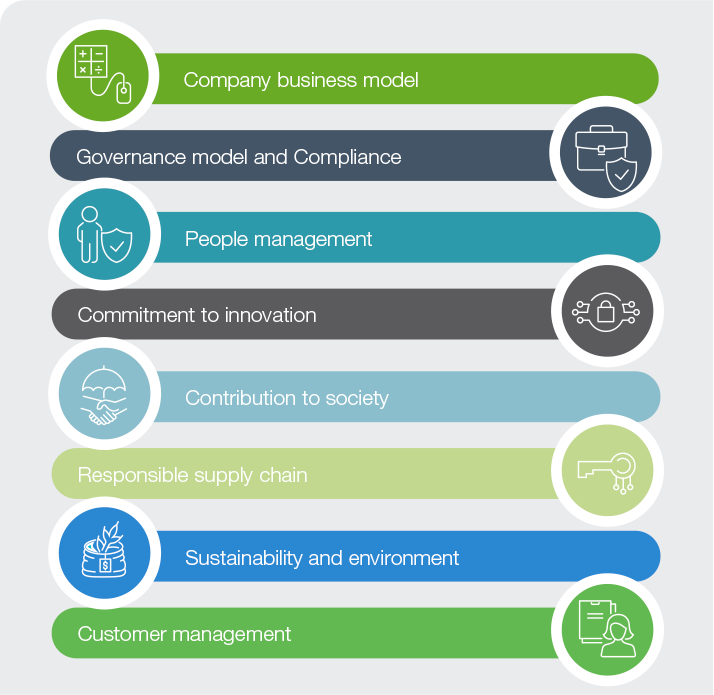
For each specific aspect, the company analysed the importance and management for Cellnex Top Management and Country Managing Directors (internal diagnosis) and identified prescribers demands and media trends in these areas have been identified, as well as good practices implemented by Cellnex’s peers (external diagnosis).
In the external diagnosis, Cellnex performed a benchmarking of eight peers to identify the best ESG practices in the telecommunications sector, through an analysis of the public information available for each company.
Likewise, the company consulted public information on reference prescribers, including sectorial prescribers as well as ESG and sustainability prescribers, such as Dow Jones Sustainability Index, CDP, TCFD, OIT, GRI, SABS, SDG, MSCI, Sustainalytics or CNMV.
In addition, in the external diagnosis, Cellnex analysed the main trends in the media and consulted Cellnex's stakeholders, incorporating the country perspective through ad hoc consultations (interviews or surveys) with identified stakeholders. In this connection, the company performed, surveys with customers and suppliers and interviews with the media, sector associations and shareholders and investors.
Furthermore, in the internal diagnosis, the company compiled and analysed the public and internal documentation available from Cellnex relating to the management of the different business aspects related to ESG, such as Strategic Sustainability Plan (2019-2023) or Equity, Diversity and Inclusion Programme (2019-2022). Moreover, Cellnex held interviews with the members of the Management Team and Country Managing Directors and conducted employee surveys.
Through the internal and external diagnosis flagged up, the relevant issues for Cellnex and its stakeholders. These inputs were used to update the map of stakeholders, as set out in the next section and to draw up the materiality matrix.
Materiality matrix
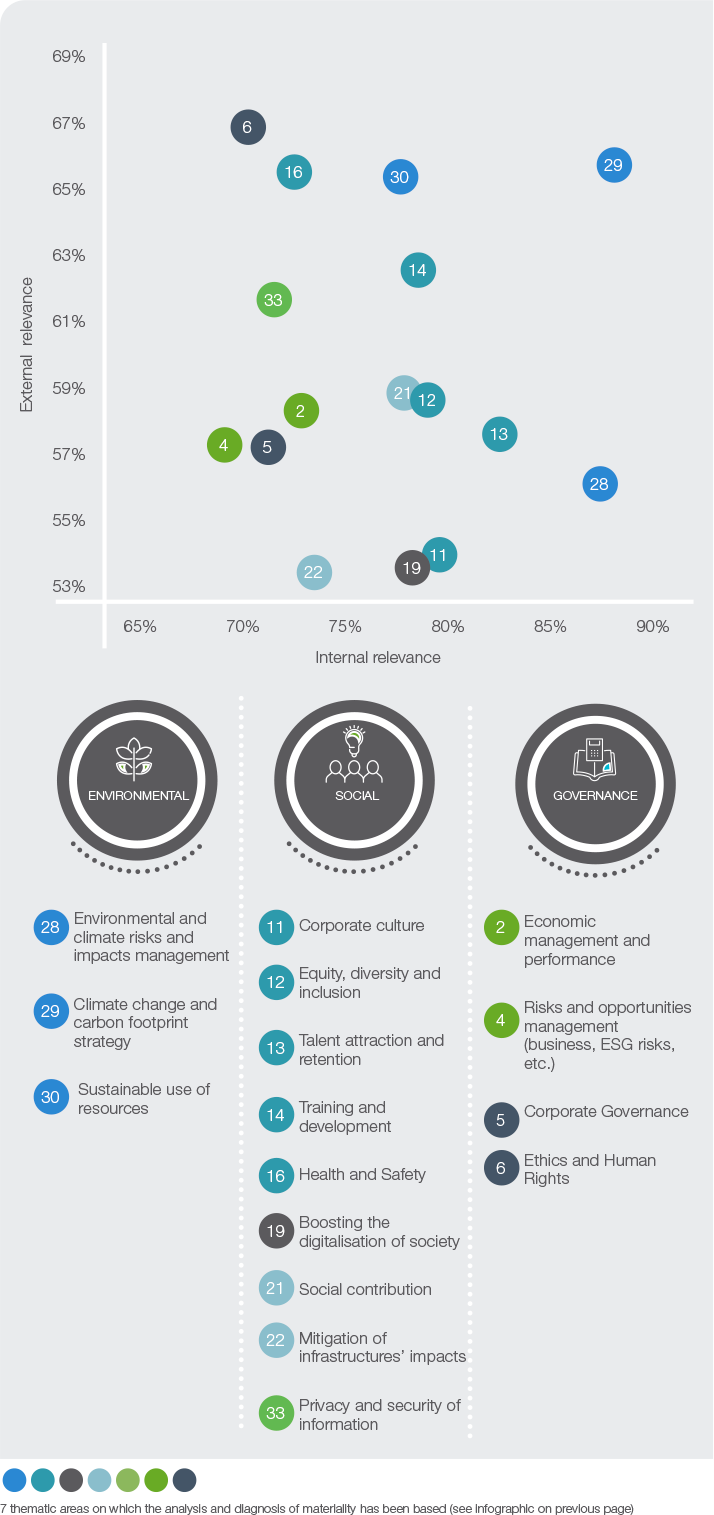
The ESG Master Plan and the current Cellnex CSR Policy were updated by the new ESG Policy to include the new aspects identified in the internal and external diagnosis and the positioning that the company wants to achieve. ESG Policy was drawn up in line with the Good Governance recommendations of the CNMV. The ESG Master Plan was approved in December 2020 and the ESG Policy in February 2021.
Moreover, the Appointments and Remuneration Committee (ARC) of the Board of Directors has been renamed the Nominations, Remunerations and Sustainability Committee (NRSC), in line with the recommendations of the CNMV published in June 2020 in the revision of the "Good Governance Code of listed companies”. Now, this Committee is the highest governing body responsible for ensuring compliance with the commitments established in the ESG Policy, as well as any actions which may derive from it. Similarly, this Committee is responsible for monitoring their degree of compliance, as well as the application of the ESG Master Plan.
This process redefined the vision on ESG within the company's Mission, Vision and Values that set the company's ambitions in terms of ESG in the medium and long term.
The strategic axes were defined within the ESG vision as defined and in light of the recommendations identified from the internal and external diagnosis along with the stakeholder’s expectations. Likewise, the analysis of the SDGs and their specific targets and their corresponding objectives were taken into account.
Once the five strategic axes and one cross-cutting communication and awareness-raising axis have been defined, priority will be given to 17 strategic lines that will give rise to 92 specific actions under Cellnex’s new ESG Master Plan. A five-year timetable has been drawn up to ensure the implementation of the ESG Master Plan, including KPIs and objectives to be achieved in some actions.
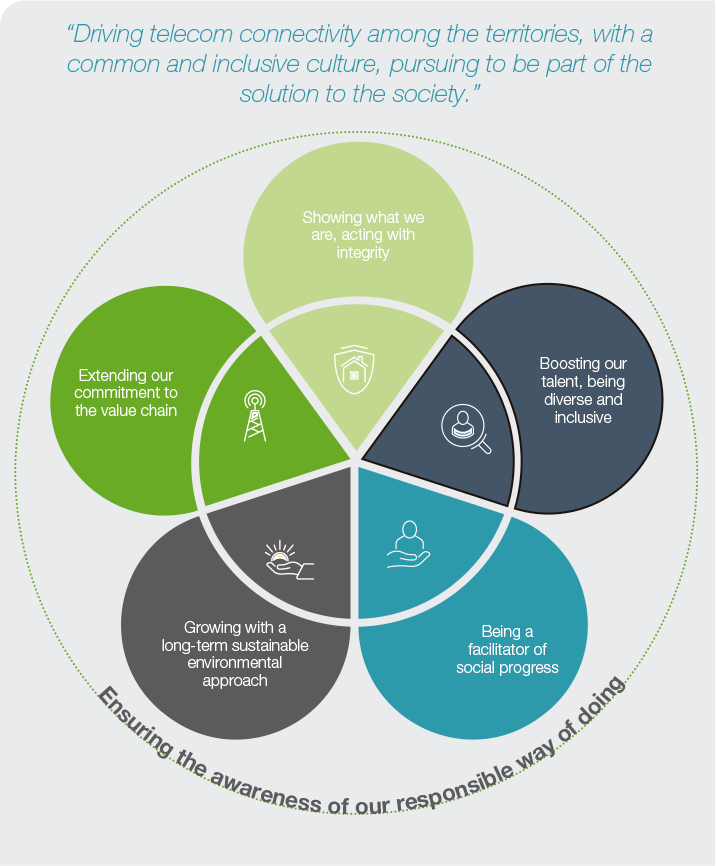
The ESG Master Plan (2021-2025) is aligned with Sustainable Development Goals, a United Nations initiative that aims to eradicate poverty, protect the planet and ensure the prosperity of humanity as part of a new sustainable development agenda (https://www.un.org/sustainabledevelopment/). There are 17 Sustainable Development Goals (SDGs) with 169 associated targets. The following infographic shows the traceability between the lines of actions of the ESG Master Plan (2021-2025) and their specific targets.
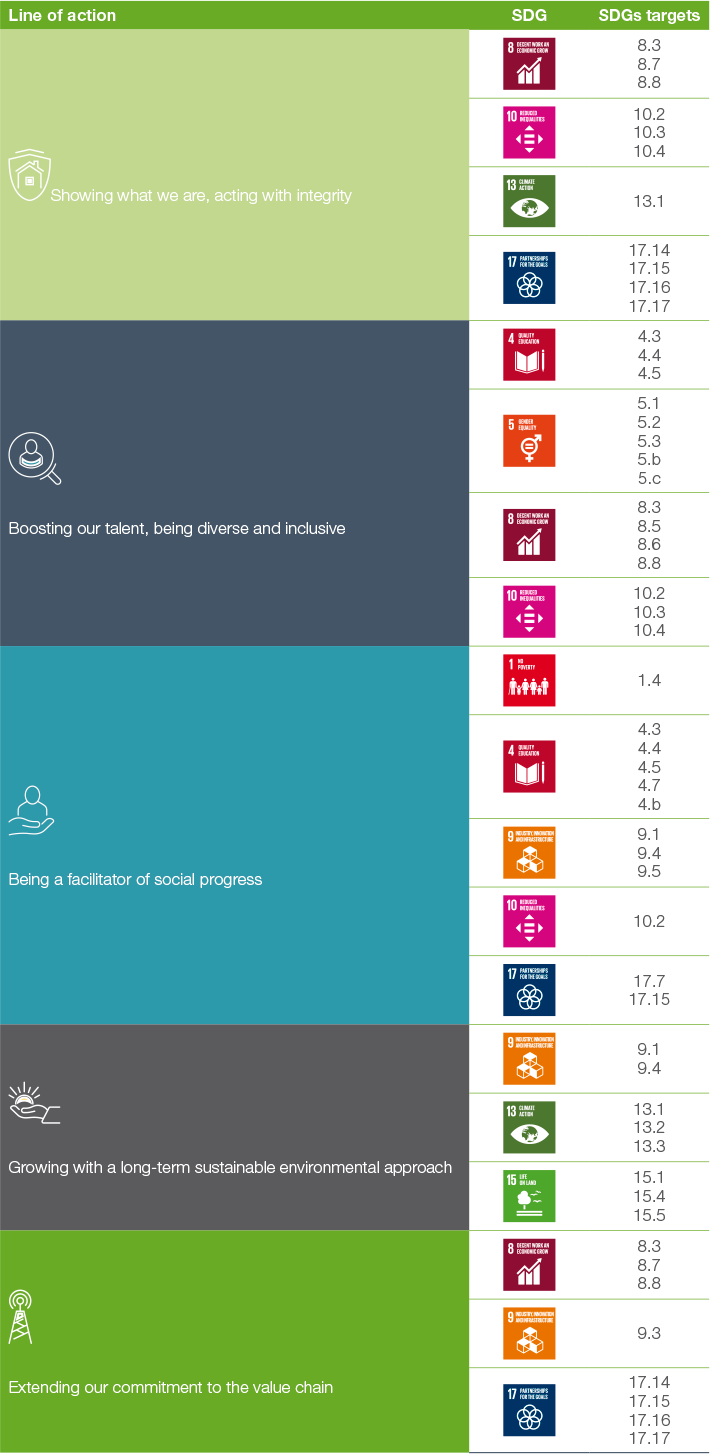
This ESG Master Plan (2021-2025), based on the material issues resulting from the materiality study, is aligned with both the Global Reporting Initiative indicators and the requirements of the Law 11/2018 related to non-financial information and diversity. The following infographic shows the traceability between the materiality matrix, the ESG Master Plan and the reporting regulation.
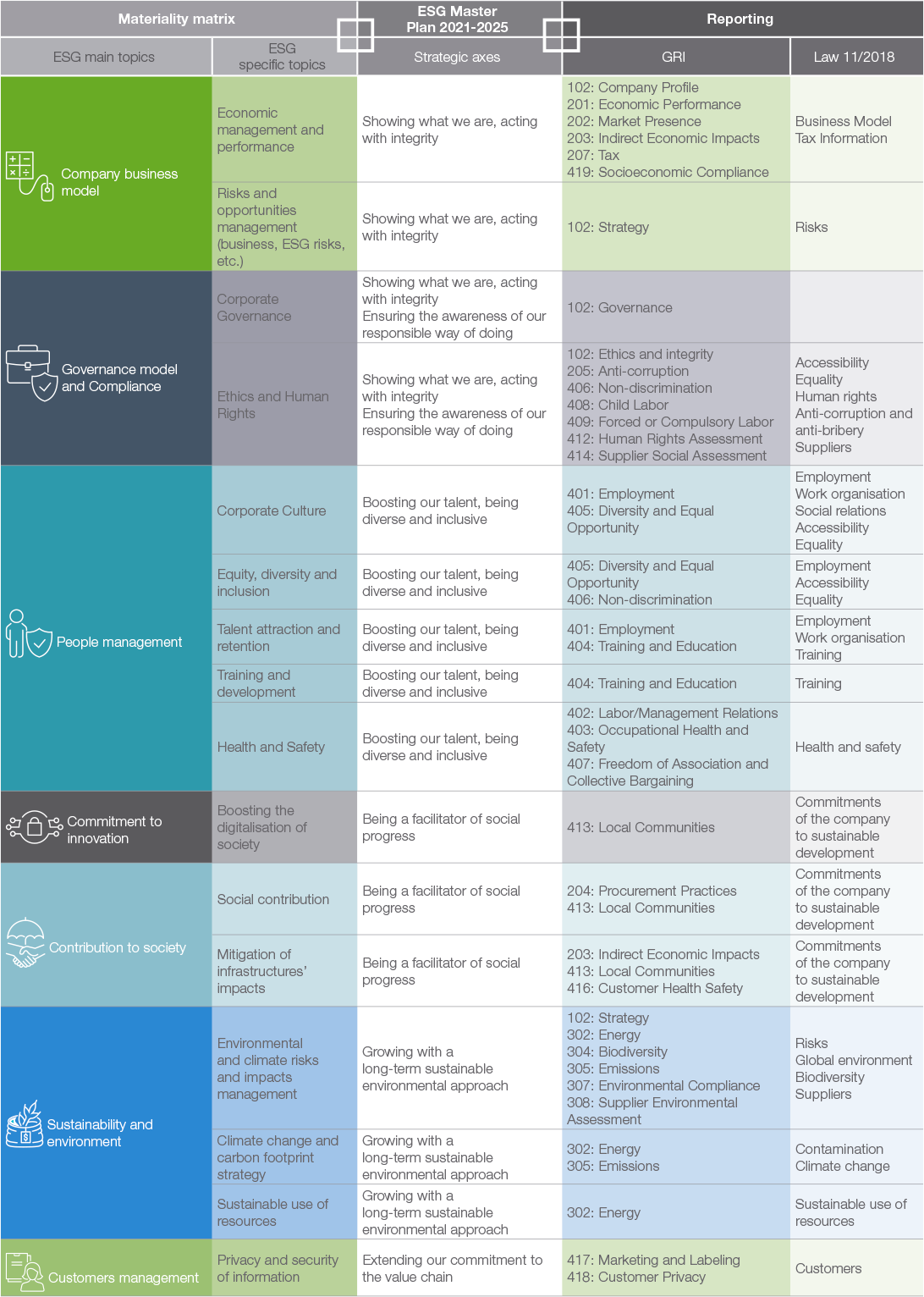
Sustainable Development Goals
A study conducted in 2020 identified and prioritised the most relevant SDGs and their specific targets for Cellnex and analysed the company's contribution to their achievement using the Global Goals Business Navigator tool developed by PwC.
In order to identify and prioritise the relevant SDGs and their specific targets for Cellnex, the necessary information on the company has been compiled in the different countries in which it is present and has been introduced as input in the Global Goals Business Navigator tool, developed by PwC.
Likewise, this study analysed the current contribution of Cellnex to the SDGs and their specific targets by analysing the results extracted from the Global Goals Business Navigator tool, evaluating the relevance that each SDG and its goals have on the company's direct operations and indirect operations associated with its value chain.
Cellnex has gone one step further, analysing what Cellnex's potential contribution to the SDGs and their specific targets would be in 2030 by assessing the risk associated with non-compliance with the SDGs and their specific targets by the countries in which the company operates and identifying opportunities and actions to be taken by Cellnex under the new ESG Master Plan, allowing us to maximise the company's current contribution to the SDGs and their specific targets and reducing the risk associated with non-compliance.
In accordance with the prioritisation criteria applied to the SDGs and their specific targets analysed and taking into account the company’s contribution to their achievement, SDGs and their specific targets were classified into two degrees of importance (high or medium) for the Cellnex group. In this regard, SDGs 4, 5, 8, 9, and 13 were identified as having a high degree of importance, whereas SDGs 1, 10, 15, and 17 were identified with a medium degree of importance.
These results have been taken into account in the definition of the company's ESG Master Plan and ESG Policy.
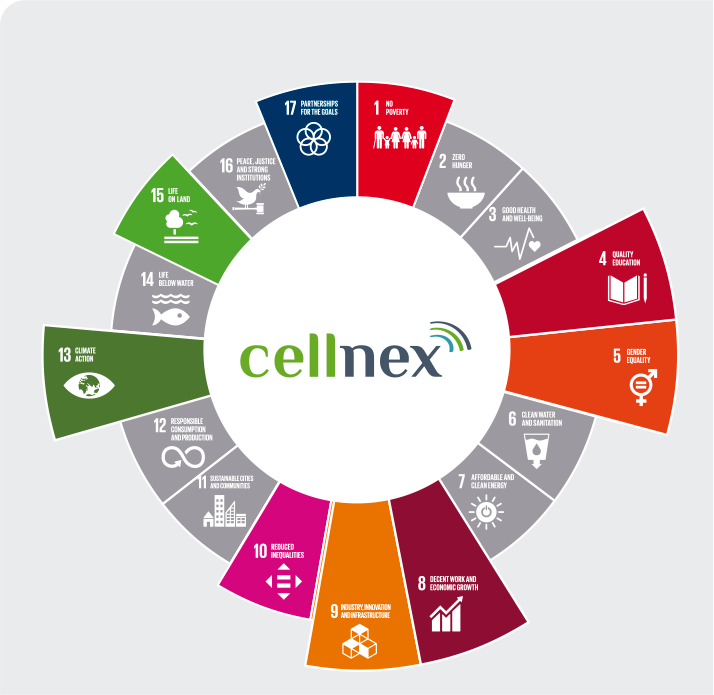
Cellnex contributed to achieve the main Sustainable Development Goals through its activity in 2020. The most outstanding initiatives were:
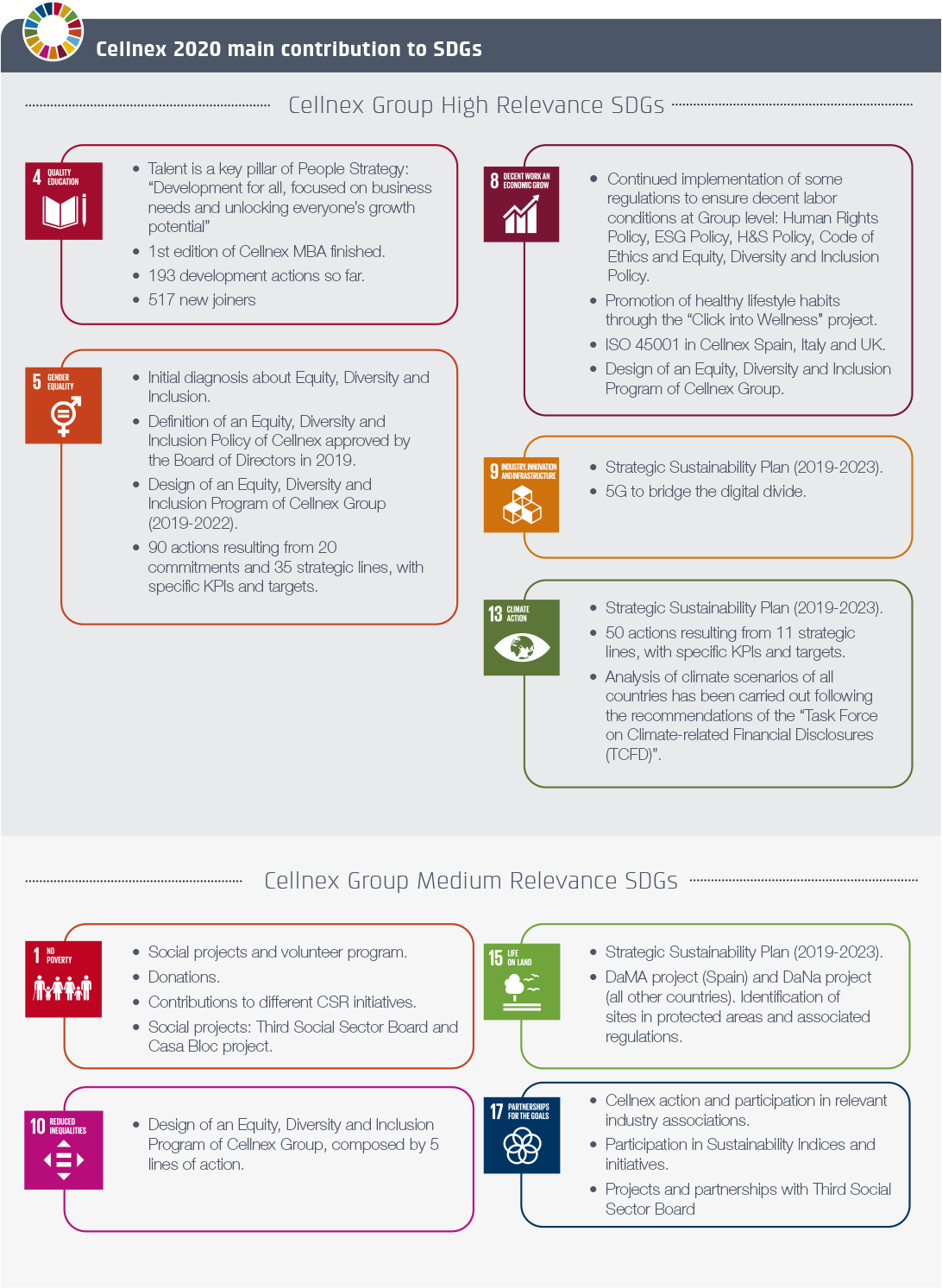
Stakeholders engagement
Consulting the various stakeholders has made it possible to identify and understand the expectations of Cellnex's stakeholders in the field of ESG. In addition, this process has served to redefine the most relevant stakeholders for Cellnex, taking into account the evolution of the company. Seven key stakeholders were identified based on this analysis:
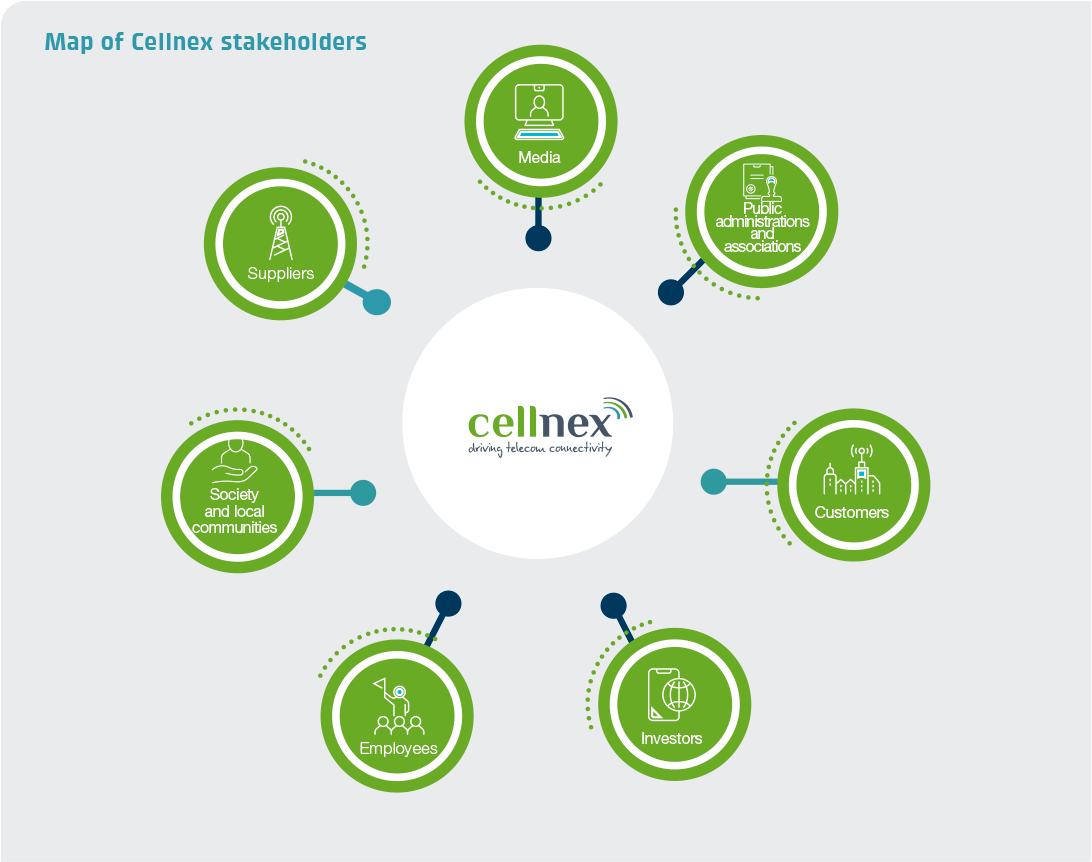
- Customers: under Cellnex's business model, all customers are B2B. For further information, see the section on “Customers”.
- Investors and shareholders: companies that invest in Cellnex and/or analyse its sustainable profitability. For further information, see the section on “Shareholders”.
- Employees: both former and recently hired employees in each of the countries in which Cellnex is located. For further information, see the section on “Cellnex’s people strategy”.
- Society and local communities: include local communities, NGOs, social and business associations. For further information, see the section on “Social contribution”.
- Suppliers: includes all providers regardless of size. For further information, see the section on “Suppliers”.
- Media: includes press, communication, brand and advertising agencies.
- Public administrations and associations: include European, national, regional and local administrations, regulators, industrial associations, technological platforms and universities or training centres.
In relation to the Public administrations and associations stakeholder group, Cellnex collaborates actively with various entities at national and international level. Cellnex's participation in different associations allows it to improve engagement with other actors in the sector and participate in decision-making that would affect the company.
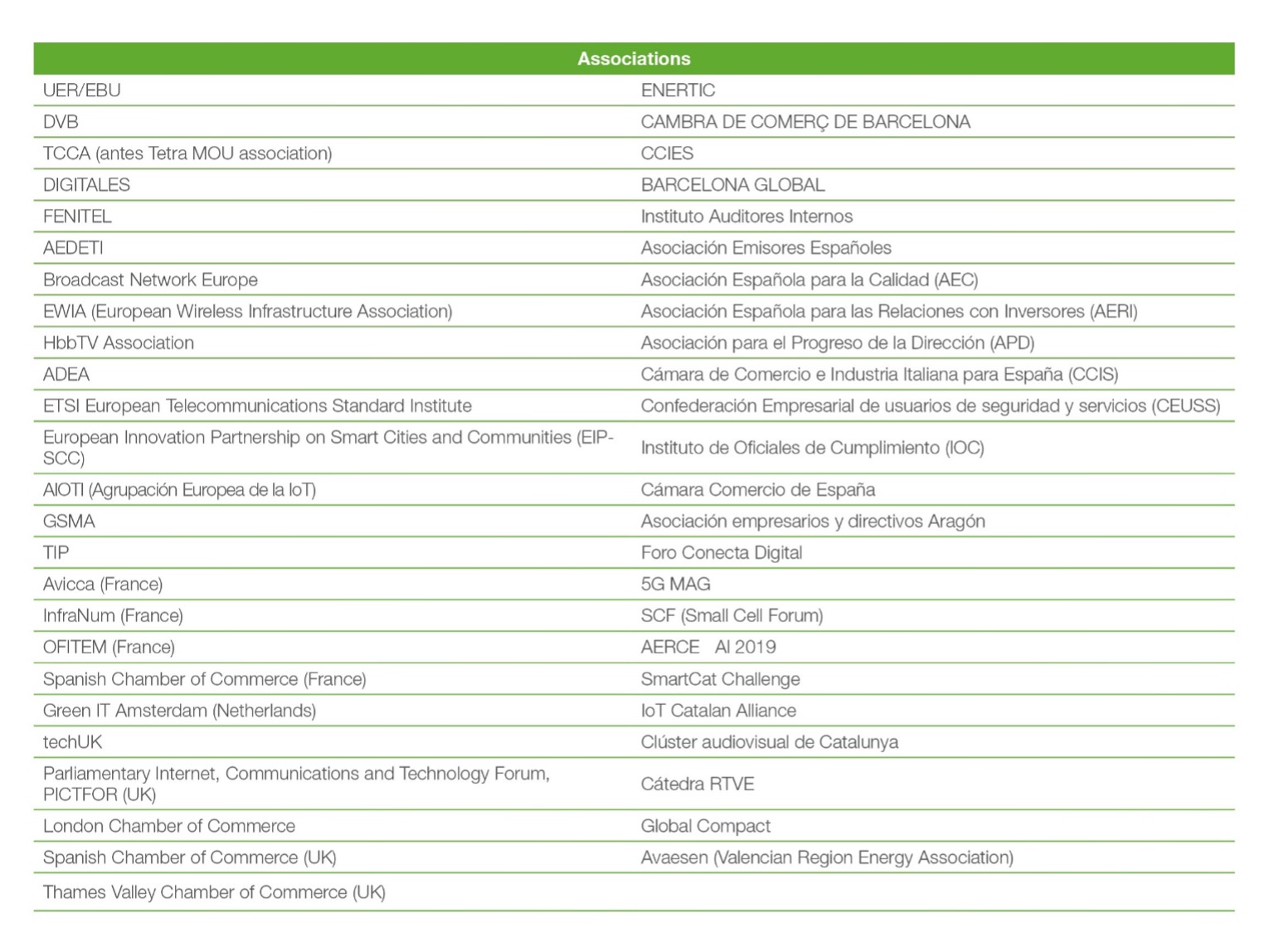
Additionally, Cellnex participates in fora, sharing its knowledge and experience. Through its participation in these fora, Cellnex is updated on the latest trends and is enriched by the transfer of knowledge that takes place between the entities that are part of the fora. Cellnex also collaborates with different foundations as well as universities and training centres.
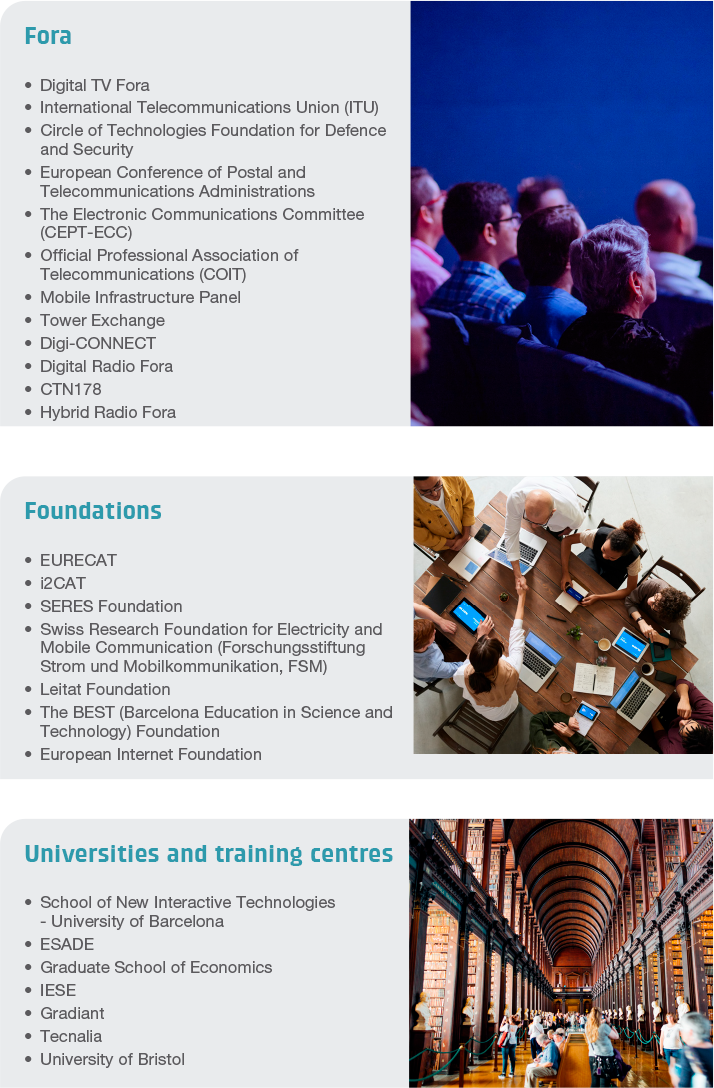
Dialogue with stakeholders
Cellnex maintains a close relationship with its stakeholders, through a constant communication, especially with customers, employees, suppliers and shareholders and investors. This dialogue is built up on the basis on each of the interactions with the stakeholders through the different channels set up for this purpose.
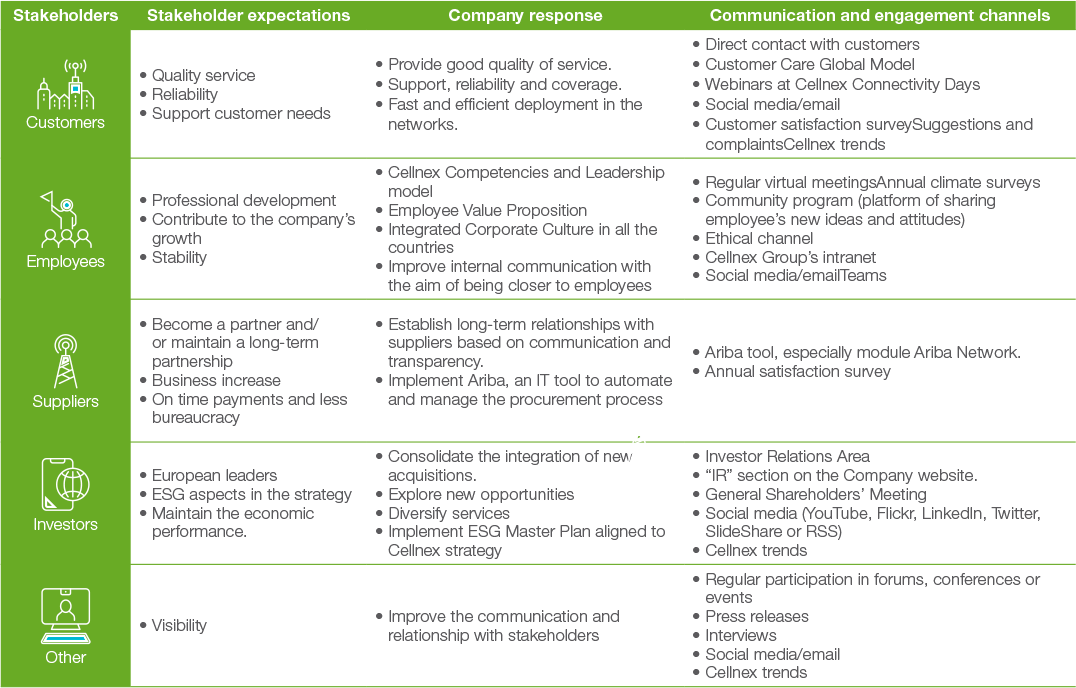
Events
The company has taken part in several events during the year, most of them virtual, through videoconference, in order to share its expertise in different fields. The most outstanding were:
- Woman now reset (Madrid): A virtual congress that over two days brought together prestigious personalities to begin to build a sustainable and diverse world, reinvent employment and discover new ways of living, always with an eye on the challenges faced by women. Àngels Ucero, Global Management System Director of Cellnex Telecom was invited as a speaker.
- 1st Space & Industrial Economy 5.0 Sevilla Virtual Summit: The event promoted the development of innovation, technology and the new industry in Spain, with a clear international vocation and a strong presence in the aerospace sector, as well as a dynamic and innovative vision of the economy. José Antonio Aranda, Director of Innovation and Product Strategy of Cellnex was invited as a speaker.
- Innovation, Technology And Digitalization Meeting: Future And Digital Europe: The axis of the event revolved around how Europe and Spain can improve their digitisation in a scenario where supercomputing, artificial intelligence, cybersecurity, the digital divide, data management or digital sovereignty have become at the same time challenges and concerns. Tobías Martínez, CEO of Cellnex, was invited as a speaker at an event in which Margrethe Vestager, Executive Vice-President for the Digital Age and Commissioner for Competition of the European Commission, and Nadia Calviño, Minister for Economic Affairs and Digital Transformation of the Spanish Government, among others, also participated.
- STEM Women Congress (SWC) (Barcelona): A meeting point for STEM companies, initiatives and institutions, to make visible and promote female talent in the STEM field. Anna Bufí, Country People & Organization Director, was invited as a speaker.
- BNEW: A physical and digital B2B event that gathers unique events of the sectors of Logistics, Real Estate, Digital Industry, Ecommerce and Economic Zones. They all share a common denominator: New Economy. Mikki Uusitalo, Global Mission Critical & Private Networks Director and Jose Antonio Aranda, Director of Innovation and Product Strategy at Cellnex Telecom, were invited as speakers.
- DigitalES Summit: A virtual meeting, in which within a scenario generated in 3D, people and technology share the limelight to value the work of all the actors who are leading the change and digitization of Spain at a time as complex as the present. Under the concept "Leading the change", the leaders of innovation and digitization, companies and public institutions met. Oscar Pallarols, Global Commercial and Innovation Director at Cellnex Telecom was invited as a speaker.
- 4K Summit: The 4K Summit is the main international meeting of professionals from the Ultra High Definition industry, both in the technology and audio-visual content sectors. Xavi Redón, Product Manager at Cellnex, was invited as a speaker.
- Critical Communication World: A global conference and exhibition for the critical communications sector. Valentí Roca, Global Head of Private Networks at Cellnex Telecom speaker participated in a round table with representatives from Nokia, Basf, and Ofcom.
- 1er Webinaire: "La Parole des Dirigeants": The Official Chamber of Commerce of Spain in France (COCEF) launched a series of testimonials from business leaders who spoke about the impact of COVID-19 on their activity. Vicent Cuviller, Managing Director on Cellnex France Groupe, was invited as a speaker.
- Intel Network & Edge vSummit Series: A virtual summit series brings of the latest on technologies driving the evolution of network and edge infrastructure. Together with experts of CenturyLink and Lenovo, Jose Antonio Aranda, Director of Innovation and Product Strategy at Cellnex Telecom shared their insights to help expand your knowledge of providing visual experiences at the Edge and Content Delivery Networks (CDN).
Awards and recognition of Cellnex in 2020
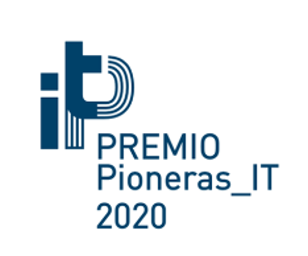 During 2020, Cellnex received several awards that recognize the good performance of the company and its contribution to society.
During 2020, Cellnex received several awards that recognize the good performance of the company and its contribution to society.
Moreover, Cellnex is part of the jury of the first edition of the IT pioneers award, together with personalities such as the President of CEOE or the President of Ametic, and leading companies such as Telefónica, Whirlpool, Hispasat, Fundación Orange.
This award will be awarded annually to a female Telecommunications Engineer, to value her career and professional career as a "pioneer". The aim of this “Pioneer of the Year” award is to give visibility to the contributions and achievements that have been made in society, thanks to the presence of female talent in the technological field, particularly in telecommunications.
In this connection, the Pioneras_IT Award will also award several mentions to teaching centres or Institutions that promote scientific vocations: Special Mention Pioneras_IT Public Institution, Pioneras_IT Private Institution Mention, and Pioneras_IT Educational Institution Mention.
